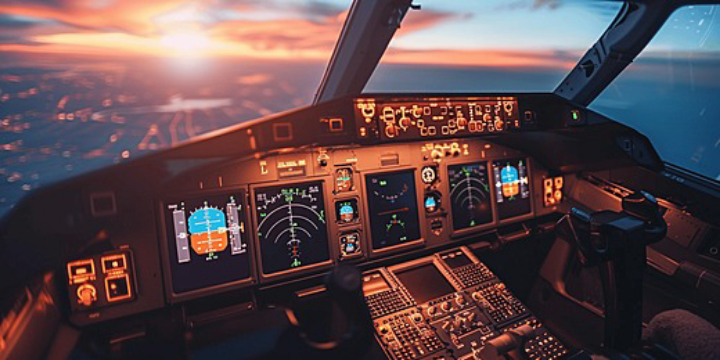Becoming a pilot for an airline in the UK requires several steps, including meeting the necessary qualifications, undergoing rigorous training, and accumulating flying hours. Here’s an overview of the general process:
1. Meet Basic Eligibility Requirements:
- Age: You must be at least 18 years old to start training.
- Education: While there is no specific degree requirement, a good level of education (usually A-levels or equivalent) is beneficial, especially in mathematics and physics.
- Medical Fitness: You need to pass a Class 1 Medical Examination, which includes a thorough physical and mental health check.
- Language: Proficiency in English is essential since it’s the international language of aviation.
2. Choose a Training Path:
There are a few different routes to becoming a commercial airline pilot in the UK:
- Integrated Training Path: This is a full-time, structured program that takes you from having no flying experience to being ready for airline employment. It typically lasts 18 months to 2 years and is quite intensive. You earn the necessary qualifications in one go.
- Modular Training Path: This route allows you to complete the required training in stages, often while working part-time or taking breaks between different qualifications. It can take longer but is more flexible in terms of costs and timing.
3. Complete the Necessary Pilot Training:
- Private Pilot License (PPL): This is often the first license you’ll earn, though some training programs might let you skip this if you go directly into commercial training.
- Commercial Pilot License (CPL): The CPL is the primary qualification required to fly as a paid pilot. To earn this license, you must complete both theoretical exams and practical flight training.
- Airline Transport Pilot License (ATPL): While you can start working with a CPL, many airline pilots go on to earn the ATPL, which is the highest-level license for commercial pilots. To obtain an ATPL, you must pass several exams, demonstrate flight experience, and pass a flight test.
- Multi-Engine Rating: Most commercial aircraft are multi-engine, so a multi-engine rating is a must for airline pilots.
- Instrument Rating (IR): This allows you to fly under Instrument Flight Rules (IFR), which is essential for flying in various weather conditions.
4. Accumulate Flight Hours:
- Total Flight Hours: To qualify for an ATPL, you’ll need at least 1,500 hours of flight time. Many pilots build their hours by working as flight instructors or flying smaller aircraft before transitioning to larger commercial planes.
- Experience: Some airlines may require specific experience in certain types of aircraft or certain kinds of flying before offering a job as a first officer.
5. Apply for Airline Jobs:
Once you’ve completed your training, gained experience, and earned the necessary qualifications, you can apply for first officer positions with airlines. Many pilots begin their careers as second officers or copilots before moving up to captain positions.
6. Undergo Airline-Specific Training:
Even once you’re hired, airlines will require additional training on their specific aircraft and operational procedures. This includes:
- Type Rating: A specific training program for the type of aircraft you’ll be flying.
- Line Training: Flying with a senior pilot to gain real-world experience.
7. Ongoing Training and Professional Development:
- Airline pilots undergo regular training to keep their licenses up to date, including recurrent training and flight simulator sessions.
- Medical exams are also required periodically.
8. Costs:
- The cost of training can be high. Integrated programs can cost anywhere from £70,000 to £120,000, while modular training may be slightly more flexible in terms of pricing.
Additional Considerations:
- Pilot Shortage: In recent years, there has been a shortage of pilots, which has created more opportunities for those entering the industry.
- Airline Sponsorship: Some airlines offer sponsorship programs where they pay for your training in exchange for a commitment to work for them for a certain number of years.
If you’re interested in specific schools or flight academies in the UK, there are several renowned institutions that offer pilot training, such as the Oxford Aviation Academy, CAE Oxford, and L3 Harris.
Would you like more details on any specific part of the training process or the costs involved?
CLICK 👉 download 300 aviation books just 1 MB
CLICK 👉 AIRBUS A320 COURSE
CLICK 👉 BOEING 737 PILOT COURSE
CLICK 👉 BOEING 747 PILOT COURSE
CLICK 👉 BOEING 757 PILOT COURSE
CLICK 👉 BOEING 767 PILOT COURSE
CLICK 👉 BOEING 777 PILOT COURSE
CLICK 👉 BOEING 787 PILOT COURSE
CLICK 👉 CESSNA 150 PILOT COURSE
CLICK 👉 CESSNA 152 COURSE
CLICK 👉 CESSNA 162 SKYCATCHER COURSE
CLICK 👉 CESSNA 172N SKYHAWK
CLICK 👉 CESSNA 172S COURSE
CLICK 👉 CESSNA 182T SKYLANE
CLICK 👉 ROBINSON R22 COURSE
CLICK 👉 ROBINSON R44 RAVEN II
